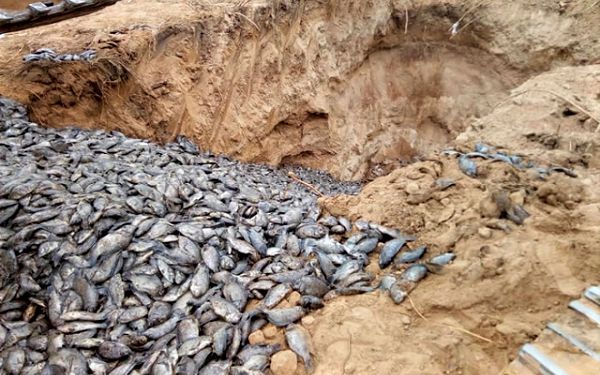
Tilapia deaths along Volta Lake; A veterinary pathologist’s point of view
Incident number one: On October 13, 2018 more than 18 tonnes of tilapia were reported dead on Fujian Fish Farm (Asutsuare), Maleka and Triton Farms (Dodi Asantekrom), all along the Volta Lake.
Incident number two: Regional news of Monday, December 10, 2018 reported over 100 tonnes of dead tilapia at various fish farms in the Eastern Region (including Amur Fisheries at Asikuma, Tropo Farms in Mpakadan, Vision 2000 and West Africa) operating behind the Akosombo Dam.
Advertisement
According to the authorities from the Environmental Protection Agency (EPA), Fisheries Commission and the National Disaster Management Organisation (NADMO), the suspected cause of these fish deaths was failed cross-breeding with foreign big tilapia and multiple overcaging to cash in on the festive season. The inference is that the cause of the problem was unknown.
For incident number one, at the time of its occurrence, the Fisheries Commission reported that tissue samples (brain, kidney, spleen, liver) of dying and normal fish were negative for Tilapia Lake Virus (France, UK, and Norway) and poisonous substances.
However, as to the range of poisonous substances investigated, nothing was made mention of; therefore, no one knows what poisonous substances were left out of the investigation.
The commission also reported the presence of Streptococcus agalactiae as the possible cause of the fish-kill.
There was no mention as to whether the presence of this bacterium was in the water or tissues of the fish, although this could have been ascertained from a copy of the original laboratory reports.
Moreover, laboratory results from Norway were pending.
Reported observations in dead fish were clouded gills, high gill hyperemia (red gills), with excessive mucus exudation (slimy gill material).
It is my view that these observations suggested stressed fish and that the gills were cloudy because of the excessive mucus exudation.
It is also my view that the reported presence of the Streptococcus agalactiae as the possible cause of fish-kill does not correlate with the reported clinical observations in the affected fish.
This, together with the inconclusive nature of the laboratory results and the absence of the results from Norway, precludes reopening of the fish farms pending further investigation. It is systemic bacterial infection (septicemia) that can cause such massive fish-kill.
If the fish had died of systemic infection by Streptococcus agalactiae, the typical changes associated with this, such as haemorrhages in skin, base of fins, anal orifice, mouth eyes, internal organs, skin furuncles, ulcers and pop-eye would have been observed, but these were not present or reported.
Thus, the presence of Streptococcus agalactiae should be considered a contaminant from the water or due to some degree of putrefaction (fish rot) of the fish samples before they got to the laboratories.
Also, the explanation that continuous closure of the farm could lead to high production cost and high fish price for the consumer is untenable.
Can the risk to public health and life of the consumer, in short or long term, be bought? Nonetheless, on November 16, 2018, the Ministry of Fisheries and Aquaculture did release an official report to all media houses; and also on January 10, 2019, there was a news item in which the Fisheries Commission disclosed to the Daily Graphic that the cause of the fish deaths in the first incident at Asutsuare and the locations mentioned was streptococcus agalactiae 1a, aided by a spill from the Kpong Dam the day before the kill.
As to the conclusive cause of the massive tilapia deaths on fish farms in Eastern Region, this same authority has kept mute, as of the time of writing.
This fish kill occurred on farms behind the Akosombo Dam and not the Kpong Dam.
If the fish deaths at the Kpong Dam were aided by a spill, then what about the deaths on the farm behind the Akosombo Dam?
It is the view of this veterinary pathologist that the results are inconclusive and smell of a cover-up.
The public should avoid consuming tilapia until the authorities give definitive and convincing answers to the questions raised.
The writer is a Veterinary and Comparative Pathologist in Canada and Ghana.



